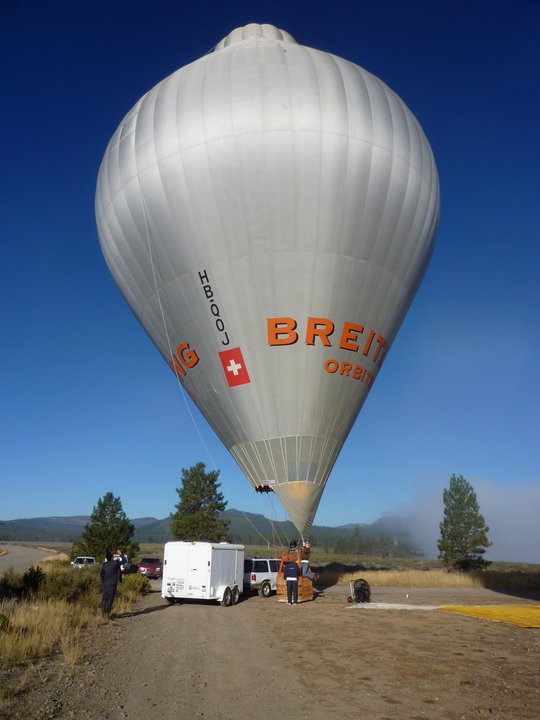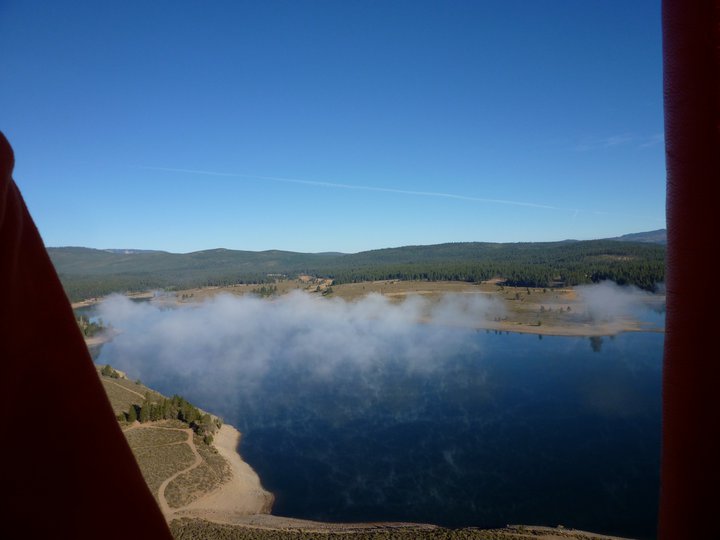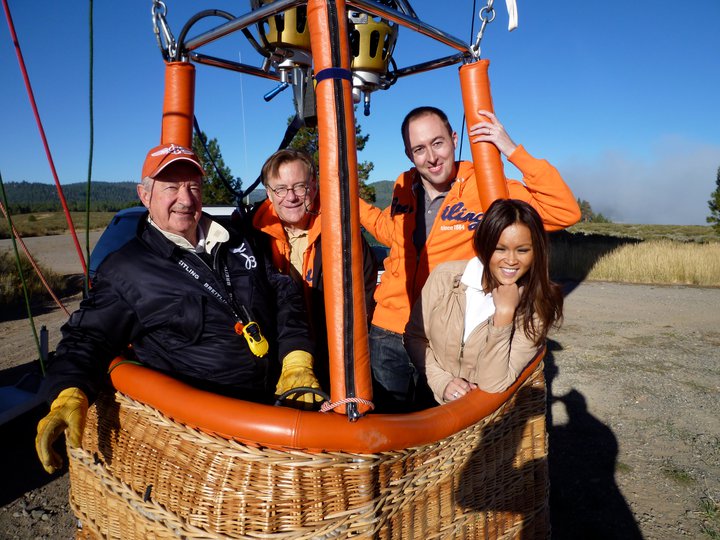
They call it "auto racing in the sky." Every year, aircraft owners gather in Reno to compete on big ovals, like NASCAR, except the tracks are in the clouds.
Buzzing the ground at speeds of 400 miles per hour gives spectators plenty of thrills. Occasionally, a jet will even crack the sound barrier (accidentally, it's illegal), sending down a thunderous boom. Like auto racing, there are crashes, too. Since 1964, when the Reno Air Races began, 19 folks have lost their lives.
My Reno weekend was to include all of this excitement, plus a few other perks. There would be interviews with Wayne Gretzky, the hockey star, and actor John Travolta, a part-time pilot with Qantas airlines -- plus a ride in a P-51 Mustang. But the kicker would be a hot-air balloon ride with Brian Jones (no, not the ghost of the deceased Rolling Stones guitarist).
In 1999, Jones and Bertrand Piccard completed one of the last great aviation feats by being first to circumnavigate the globe nonstop in a balloon. Their Breitling Orbiter 3 now resides in the Smithsonian National Air and Space Museum in Washington, DC, alongside Charles Lindbergh's Spirit of St. Louis and the Apollo 11 reentry capsule.
We left at 5:30 a.m. in dense fog for a drive to the Nevada-California border, where our gas bag was being readied. Jones uses a replica of Orbiter to give rides to thrill-seekers while raising money for his Winds of Hope Foundation, which aims to eradicate the disfiguring, flesh-eating disease NOMA.
We're not out for records but before any balloon ride, even a short one, precautions must be taken. First, we can't leave until the fog clears. If it doesn't, once aloft we may not be able to identify a safe landing site and end up tangled in trees or power lines. Second, because we are at the mercy of air currents for horizontal movement, small trial balloons are sent up periodically to determine whether winds aloft are suitable.
When the sun finally peeks above the horizon, the fog begins to lift and the wind cooperates. Four of us cram into a claustrophobic wicker gondola. Once the balloon tethers are released, we begin a slow, silent drift upwards. Initially, the ground recedes imperceptibly. But before you know it, there are a few hundred feet between you and the earth.
A strange feeling invades your loins. I've flown supersonic in Cold War-era aircraft, jumped from a plane, even climbed the exposed ridges of the Matterhorn, but I've never felt anything like this. Perhaps it's because there are no belts to strap in with, or because I don't have a parachute. Add to that the fact that the lip of the basket comes no further up than my waist.

Whoosh! Jones pulls open the valve to an onboard propane tank, and a 10-foot flame leaps into the balloon shell above. For a moment I'm alarmed, thinking maybe my hair's caught fire. (It hasn't). Unlike dirigibles filled with gas lighter than air (say helium), we must keep reheating the air in our balloon so it stays lighter than the cooler (denser) air outside.
The higher we go, the more relaxed I become, partly because I get used to the experience -- and partly because the ground begins to look more like a scale model, and a beautiful one at that. The lake below morphs into a swath of deep blue on a giant mural, the forest an uneven saw-tooth of azure on the horizon. Once we reach cruising altitude, 1,500 feet, I'm comfortable enough to ask Jones some questions.
As with most heroes Jones, 63, has a sense of humor. He jokes about when he and Piccard crossed over Mauritania to set the record. "I think more for the camera, we hugged each other. I'm in this tiny space with a guy I've flown with for 19 days, my arms around his neck gazing into his eyes. There was nobody else there. A kind of Britishness came over me; I was embarrassed. Bertrand noticed, too. We quickly dropped our arms, shuffled a bit and sat down."

After 20 minutes, it's time for us to descend. Near the ground, we nearly brush a treetop. Jones, the consummate cool cat, just smiles. When we touch down, it's in a field too bumpy to disassemble the balloon. We have to push it, still upright and inflated, to a nearby road.
On the way, I ask Jones what his first words were upon landing in the Egyptian desert. "I'm embarrassed," he says with a thick British accent. "I needed to tell control we were down. So hurridly I typed, 'The eagle has landed. All OK, bloody good.' Afterward I thought, that wasn't terribly original, was it? Obviously, the phrase was imbedded deep in my psyche. It just came out."
We both shared a good laugh, but we didn't hug.